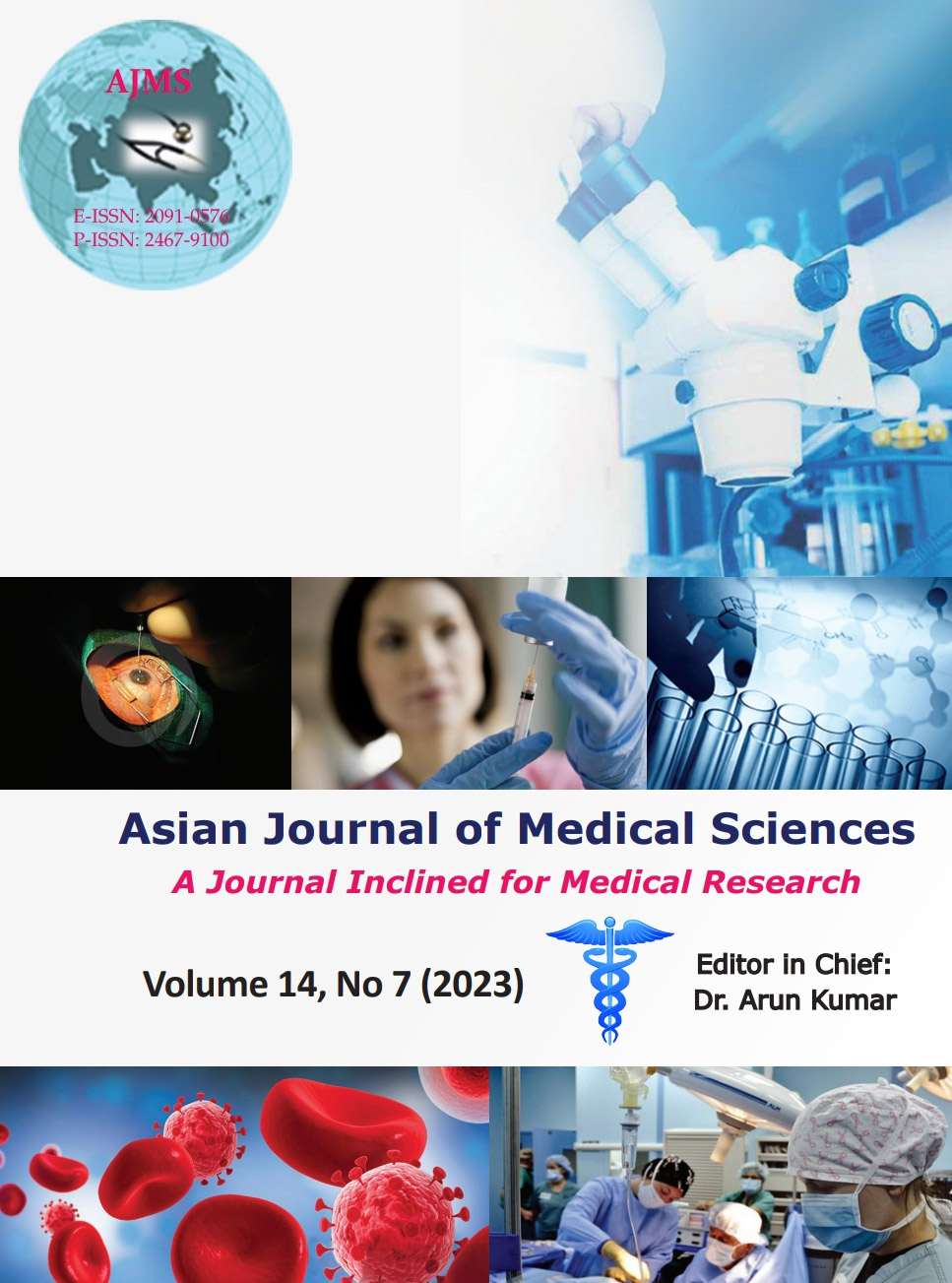Post-COVID-19 fungal rhinosinusitis – Correlation between histopathological and microbiological findings
Keywords:
COVID-19; Fungal rhinosinusitis; Mucor mycosisAbstract
Background: COVID-19 was a global pandemic. In the late December 2019, several patients presented with symptoms of pneumonia. Coronavirus is the pathogen frequently affecting respiratory system and gastrointestinal system. There was surge in the number of cases of COVID-19 associated with the fungal rhinosinusitis, mainly by Mucormycosis and Aspergillus. This study was done to analyze and correlate various fungal etiologies in post-COVID-19 patients presenting with fungal infections and correlating histopathological findings with frozen section, KOH mount findings, and fungus culture.
Aims and Objectives: (1) The aims and objectives of the study are to identify the causative fungal species in biopsy specimens of clinically suspected post-COVID-19 fungal rhinosinusitis and (2) to correlate histopathology findings with frozen section, KOH mount, and fungus culture.
Materials and Methods: A prospective study conducted over a period of 4 months between May 2021 and August 2021. Total of 30 nasal biopsies were included. Patients’ data were obtained from department of pathology, Hassan Institute of Medical Sciences, Hassan.
Results: Out of 30 cases, 66.67% were males and 33.33% were females with male-to-female ratio of 2:1. Majority of the cases were belonged to 41–50 years of age with mean age of 50 years. On histopathological examination, 56.67% cases were Mucor, 10% cases were mixed Mucor and Aspergillus infection. Out of 30 cases, 24 cases showed good correlation between histopathology and fungus culture.
Conclusion: In our study, we found good correlation of histopathology with fungus culture findings.
Downloads
Downloads
Published
How to Cite
Issue
Section
License
Copyright (c) 2023 Asian Journal of Medical Sciences

This work is licensed under a Creative Commons Attribution-NonCommercial 4.0 International License.
Authors who publish with this journal agree to the following terms:
- The journal holds copyright and publishes the work under a Creative Commons CC-BY-NC license that permits use, distribution and reprduction in any medium, provided the original work is properly cited and is not used for commercial purposes. The journal should be recognised as the original publisher of this work.
- Authors are able to enter into separate, additional contractual arrangements for the non-exclusive distribution of the journal's published version of the work (e.g., post it to an institutional repository or publish it in a book), with an acknowledgement of its initial publication in this journal.
- Authors are permitted and encouraged to post their work online (e.g., in institutional repositories or on their website) prior to and during the submission process, as it can lead to productive exchanges, as well as earlier and greater citation of published work (See The Effect of Open Access).




